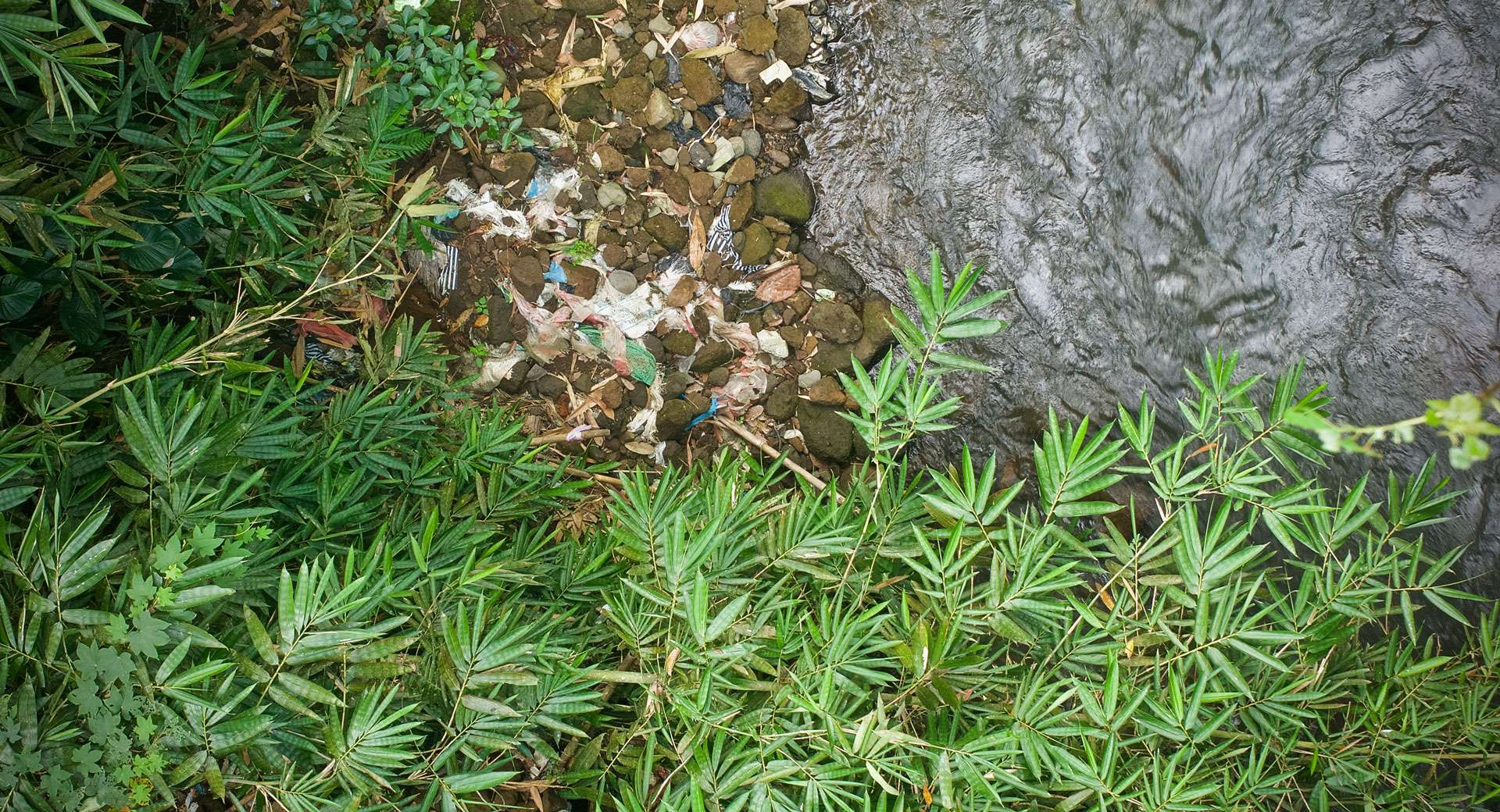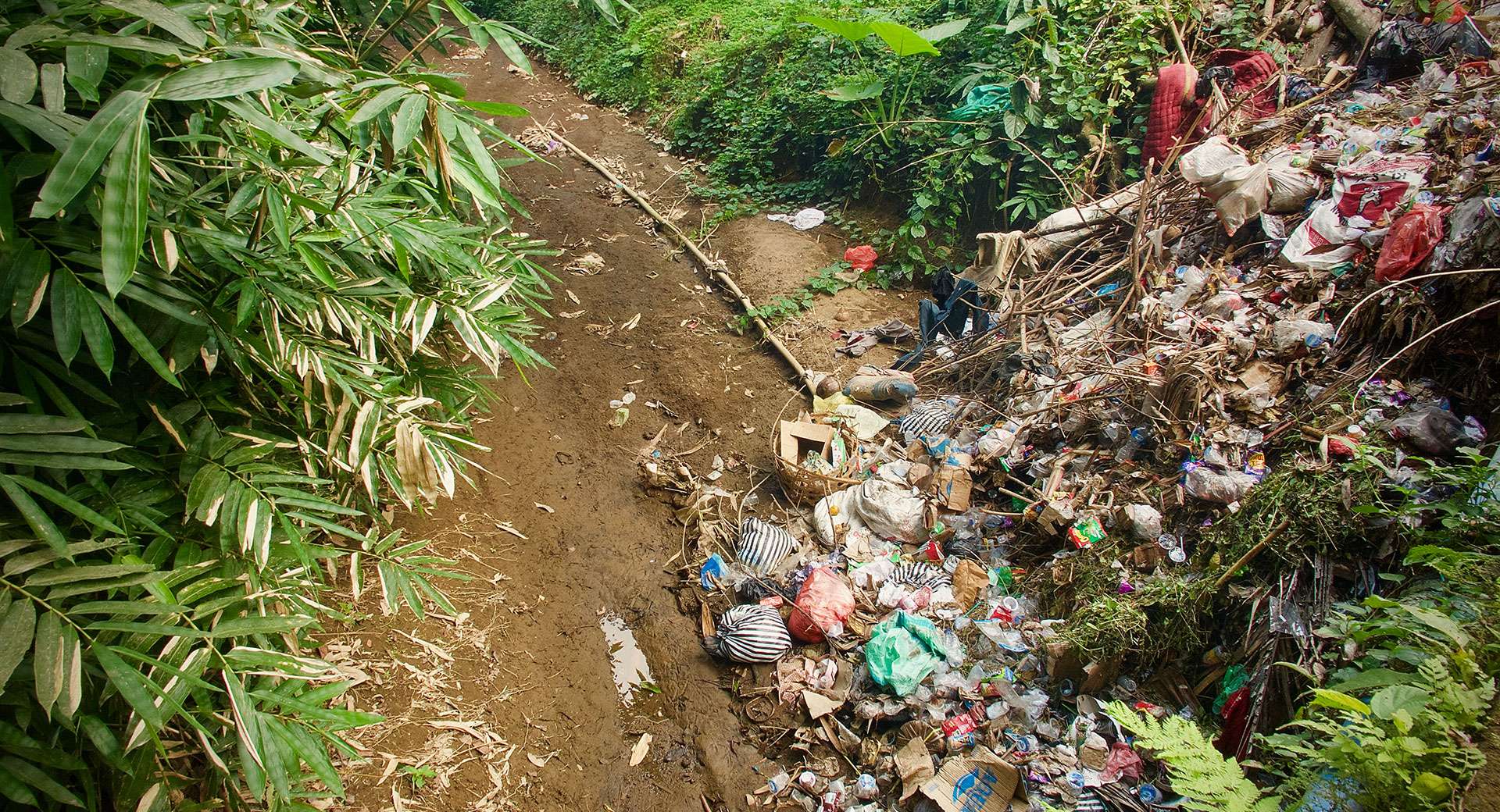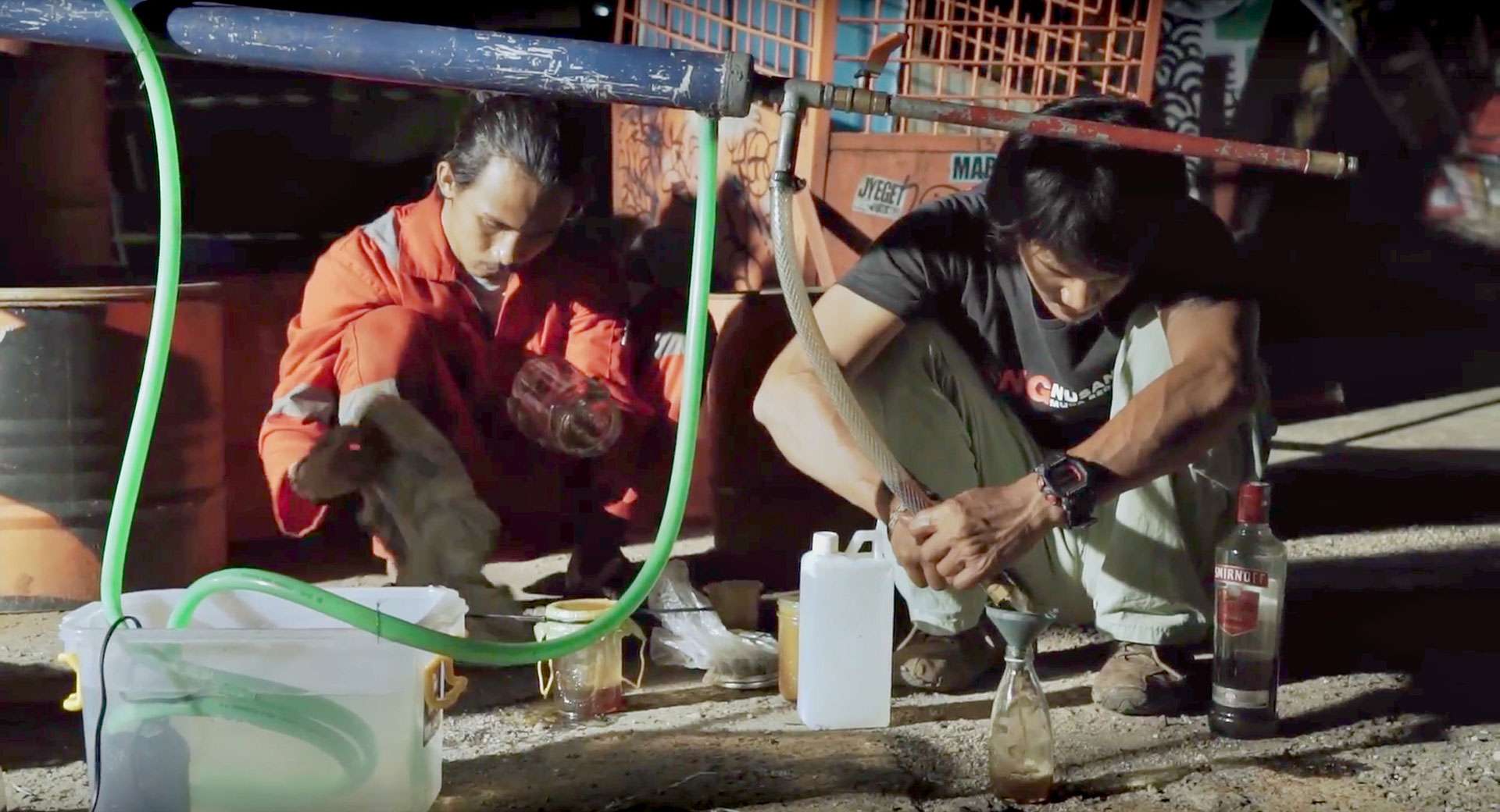Photo by Job Wind
This is going on
Indonesia is drowning in plastic. Every year 1.29 million tonnes of plastic ends up in the oceans of Indonesia (about the weight of a million cars). The consequences for the environment and the ecological system are disastrous.
Plastic is a chemical product and therefore hardly biodegradable. If it ends up in the environment, it will remain there for hundreds of years. For the most common plastics a decomposition time of 400 to 600 years applies.
Most of this plastic waste ends up in the ocean via rivers. People throw their trash into the rivers and the rivers carry it out to the ocean. These people often have little knowledge of the plastic pollution problem and have no proper waste management at their disposal. They are left with two options to get rid of their trash: burn it or dump it in a river.
Photo by Job Wind [Google Maps]
Our vision
An Indonesia where no plastic waste ends up in the environment, including its rivers and oceans.
Our mission
Our goal is to put a halt to plastic waste ending up in Indonesia’s oceans. To do this we want to:
- Educate local communities about the cause and effect of plastic waste ending up in the oceans.
- Motivate regencies to implement waste management solutions.
- Provoke controversy by exposing the gravity of the situation and the lack of responsibility from government and industry.
- Advocate governmental policies that reduce the use of plastic, enforce waste management, stimulate alternative plastic pollution reducing solutions and raise national awareness.
Our values
Cleanup Indonesia is an independent campaigning organisation, which uses online communication to raise national awareness about Indonesia’s oceans plastic pollution crisis.
Photo by Job Wind [Google Maps]
One of the biggest struggles for environmental organisations and even government is being effective in reachingthe fast amount of people living in the remote areas of Indonesia. Indonesia is the largest archipelago in the world with about 6000 inhabited islands and over 75.000 villages scattered over its lands. Many organisations end up focussing on just a few of these areas, or they take a more international approach to raise awareness among a non-local audience.
This is where Cleanup Indonesia stands out. We actually have found a way to reach out to all of these communities and deliver our clear and educational message in an effective manner. For this we can thank our experience from working in the advertising industry.
The concept is simple and consists of three key pillars:
1. An educational website
The core of Cleanup Indonesia is our educational website Membersihkan Indonesia. It targets the people that live in the rural areas of Indonesia. The website provides a clear explanation of the cause and effect of the problems. It stimulates visitors to make a difference and spread the word, and also offers realistic solutions to regencies and local government. We strongly believe that delivering this website to the local communities will directly result in a large reduction of plastic ending up in rivers and the use of single-use plastic as a whole.2. Social media adverting
How do we get our educational website to these local communities? We use the power of social media advertising! This may sound like an overly modern solution for a remote audience, but internet coverage and social media usage is quite up to par in Indonesia. With Facebook alone, we have a potential maximum target audience of 130 million people, which is about half of the total population. One other great advantage of social media advertising in Indonesia is that it’s very cheap. We can reach 2 million Indonesian Facebook users with a budget of only €100 ($110).3. Social community building
An additional advantage of running social media campaigns is that it is a great way to build up a social community. Having a strong social community gives us a direct connection with our target audience and provides us with important exposure.
Photo by Zainul Yasni
Although the costs of social media advertising is low in Indonesia, we do have a respectable sized target audience. Thus far our campaigns have been self financed, but to really be able to make an impact we need your support! By making a much needed donation you will join Cleanup Indonesia in our work to protect our precious oceans and change the way plastic is being used and disposed of in Indonesia.
There are three types of campaigns that we are focussing on:
Campaigns that raise awareness among the main target audience.
Our primary goal is to bring our educational website under the attention of Indonesians living in remote rural areas. To do this we run campaigns with a targetaudience consisting of all Indonesian Facebook users excluding the mayor cities. The size of this target audience is 48 million people. In order to reach them all we would need a total of €2400 ($2700).Campaigns that generate traffic to the educational website.
This type of campaign is charged for per actual visitor to the website. In Indonesia this costs around €0.08 per visitor. Our first goal is to get at least 0.1% of the target audience to our website, so 48.000 visitors. This comes down to €3800 ($4250).Campaigns that raise awareness among the total population.
We run this type of campaign to raise national awareness, grow our social media presence and increase our chances of being picked up by the media. To reach the maximum of 130 millionIndonesian Facebook users, we would need a total of €6500 ($7300).
Photo by Get Plastic
The campaigns we’ve ran so far have been focussed on raising national awareness and building our social media presence. Now that we have established a strong presence, we are ready to run campaigns that deliver our education website to our target audience.
Lost & Found - campaign
A campaign to raise awareness among the total population and to stimulate the growth of our social community. The campaign consisted of 16 ads, each displaying a disposed plastic bottle packaging on an Indonesia beach, and asking the brand in question to please come and pick up their lost item. We ran the campaign for one week with a total budget of €160.
Bali Ocean Plastic - campaign
A campaign to raise awareness among the Balinese population, about the source of their ocean plastic. Many Balinese believe this plastic comes from their neighboring island Java. Our research shows a different story.
Photo by Job Wind




